Meet the People Who Keep Vintage Rail Cars Rolling Across America
About two dozen classic carriages around the country offer time travel by train.
Just after dawn, Amtrak’s Empire Builder passenger train pulls into the station at Whitefish, Montana, as it does every day on its cross-country journey from Seattle to Chicago. The train usually consists of two locomotives and a string of utilitarian passenger cars. But on this morning, two of the cars, directly behind the locomotives, disrupt that familiar conformity.
Unlike the regular Amtrak cars, these ones look just like they did decades ago: One is polished stainless steel and the other a rich brown and orange with yellow stripes. The passenger cars, named “Blue Ridge Club” and “Pacific Home,” were built decades before the others, in an era when rail cars still got names instead of numbers. They are among a few dozen privately owned vintage cars that still ply the rails, offering a lucky, dedicated, or well-heeled few a chance to experience a bygone era of train travel. On this day, a group that boarded the train in Seattle the night before will be getting off to explore nearby Glacier National Park. And when that happens, people like Lou Capwell and Laura Stantz spring into action, preparing the vintage rail cars for the next group of passengers, who will be boarding just a few stations down the line.
Capwell and Stantz are among a small group of people who keep these vintage rail cars—and the first-class experiences they aim to provide—rolling decades after this type of travel began to disappear in the United States. As the train heads east along the southern edge of Glacier National Park, Capwell quickly changes beds, restocks the bar and cleans the common areas, while Stantz gets to work in a rolling kitchen that can only be described as minuscule. Outside that small kitchen, the rail cars have all the comforts of home. The rear end of the car, near the big picture windows, has plush couches. Toward the middle, near the bar, there are leather seats and tables where people can share a meal or play games. On the other end of the car, there are small private rooms, where riders can sit and watch the scenery during the day or sleep at night (the seats can be turned into beds).

In the 20th century, and especially in the decade or so after World War II, rail was not only one of the most logical ways to get around the country (as it had been before the war), it could also be one of the most exquisite. Lounge cars offered plush, window-side seats so passengers could enjoy the passing scenery. Sleeping cars offered a comfortable place to rest through long journeys. Dining cars churned out meals that are a far cry from today’s airline food—rather, they could be on par with what was served in the nation’s finest restaurants. That golden age of luxury rail travel was brief. As the interstate highway system expanded and commercial air travel took off, passenger rail service began to decline in general, and luxury forms were among the first casualties. In 1971, the remnants of the system were taken over by the quasi-public entity called Amtrak.
Some thought Amtrak was just delaying the passenger train’s inevitable demise, but a half-century later it continues to move millions annually. But the amenities that had once turned getting from point A to point B into an adventure or vacation all its own had been greatly diminished, replaced with a more practical experience.
But train fans are nothing if not dedicated, and were not content to let the pre-Amtrak experience go. In the 1970s and 1980s, as equipment modernized, enthusiasts purchased old rail cars and restored them to their original grandeur. Among them was Bill Gray, a now-retired flight instructor from North Carolina, who purchased his first rail car in 1990, and today owns and operates the Blue Ridge Club. Built by the famous Pullman Company in 1950, Blue Ridge Club features three double bedrooms, a master suite with a lounge area with couches, a dining area, and a bar. In the 1950s, the car was used on the Chesapeake & Ohio Railway’s premier train, “The George Washington,” that connected Cincinnati, Ohio, and Louisville, Kentucky, with Washington, D.C.
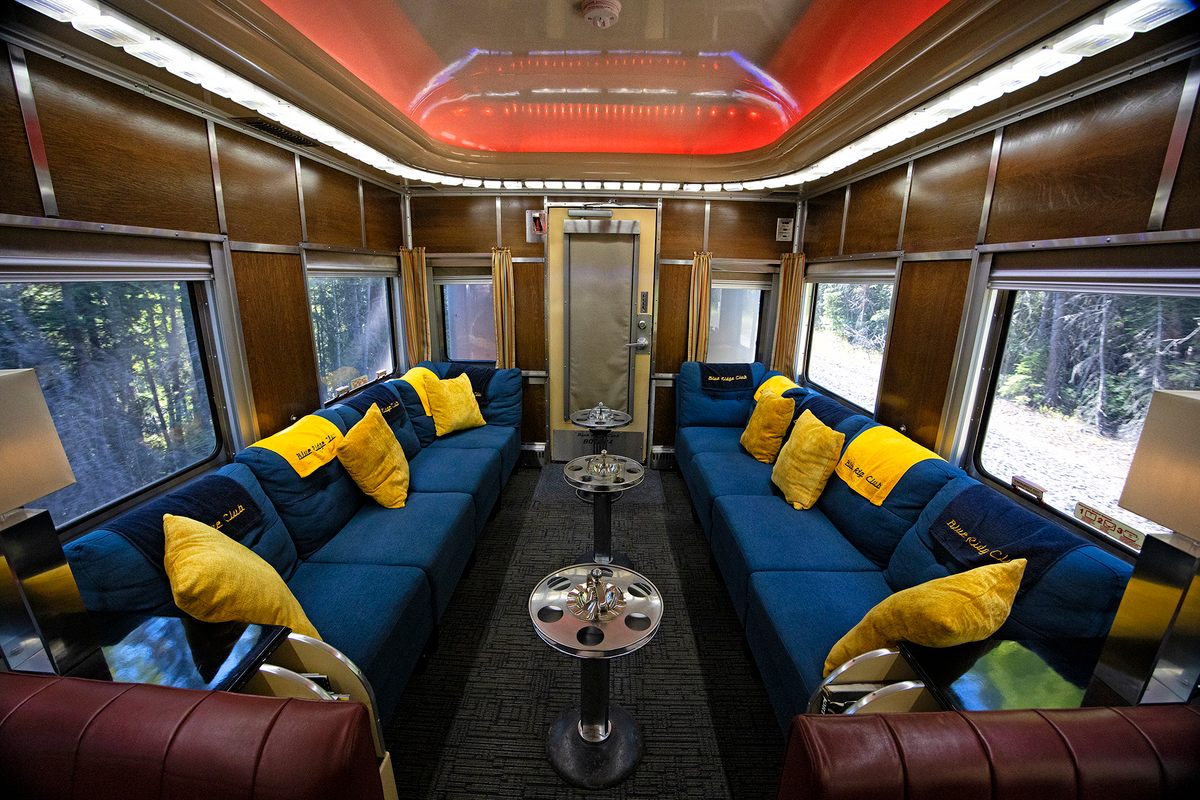
Every year, mostly during summer and fall, Gray offers his car up for private charters that crisscross the nation and hires people such as Capwell and Stantz to run the show through their company Aboard A Train. About a decade ago, Capwell was doing marketing for a railroad museum when he first got involved with planning an excursion using privately owned cars. He enjoyed the work and decided to make a career out of it. Soon his wife Stantz, a talented cook who loved digging into old railroad cookbooks, joined him.
Capwell works with car owners to set up the logistics of every trip: what Amtrak trains the cars will be added to—something needs to pull them, after all—how they’ll stock up on food and supplies, and where they’ll stop for maintenance. Stantz works on the guest experience and plans a menu, always making sure there are a few extra meals on board for the passengers, in case the train is late.
The kitchen onboard most private rail cars is small, which means space is at a premium. Stantz can’t just order a box of avocados with no plan to use them because otherwise, they’re just taking up room. She also needs to be able to think quickly on her feet in case she realizes in the middle of a trip that she has forgotten an item.
“It’s always a puzzle because, inevitably, you’ll forget something like mayonnaise so you have to figure out how to make that from scratch because you can’t just run to the store to buy more when you’re on a train,” she says.
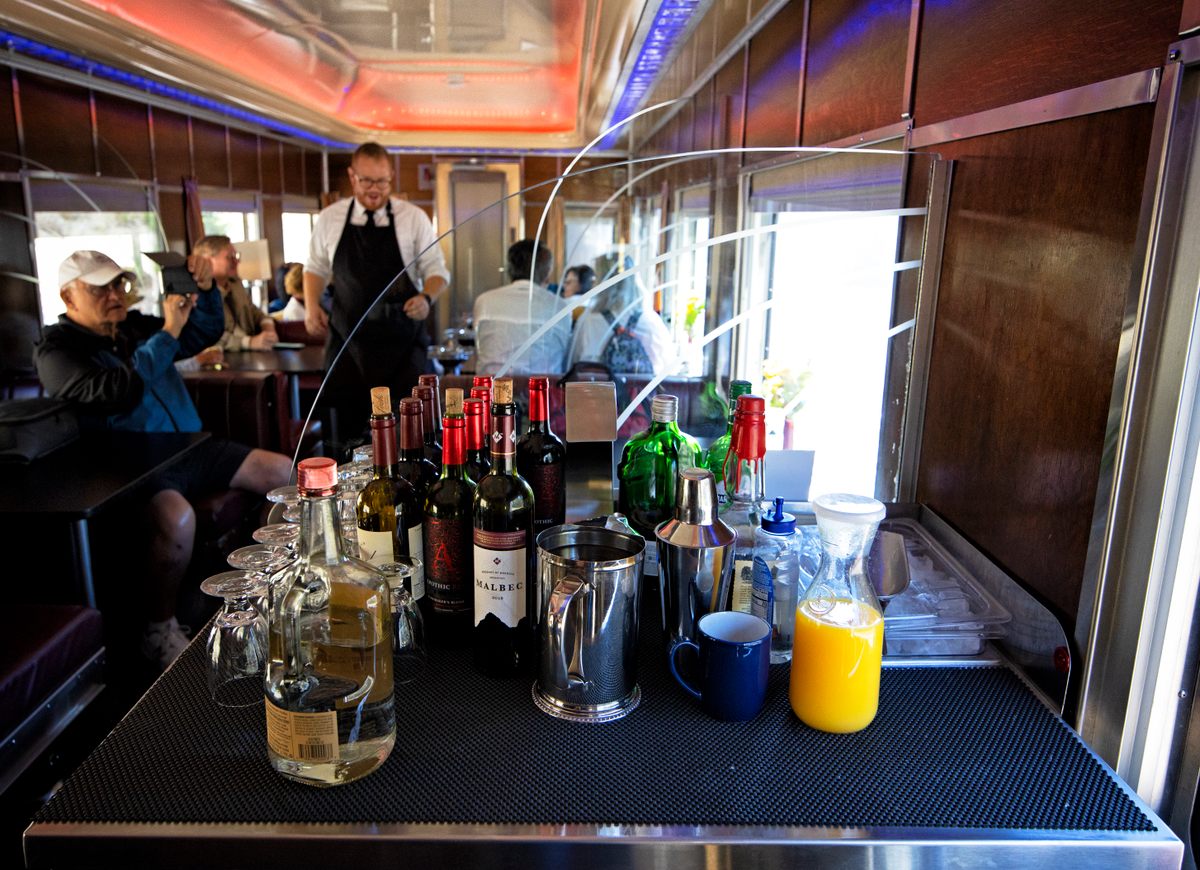
Luckily for her, there’s a long history of improvisation among dining car chefs. For example, the French dressing Stantz makes is from an old railroad recipe, one that uses simple pantry items—even a small one rolling down the tracks at 79 miles per hour.
Cooking at speed might also be one of the biggest challenges for Stantz. “My knife skills are good, but sometimes if you hit a bumpy piece of track, it doesn’t matter how good you are,” she says, laughing, adding that she’s cut herself more than once while working in an onboard kitchen.
Some of the trips Stantz works cross through multiple states or regions, so she works hard to create menus that include local dishes or recipes that are historic to a certain rail line. One time, while traveling through Iowa, she was sure to serve white chocolate–covered popcorn, a popular item at the local state fairs. And in the Southwest, it’s all about hatch chiles.
Of course, such first-class service comes at a price. Private vintage rail car charters are expensive, and not just because of the service. Owning and maintaining these mobile historic vehicles can cost hundreds of thousands of dollars annually, in large part because they must be maintained to the highest standards outlined by Amtrak so that they can travel long distances at high speeds (sometimes over 100 miles per hour, on routes such as the Northeast Corridor between Boston and Washington, D.C.). Gray says his car traveled more than 41,000 miles in 2022 alone, and that can put a lot of wear and tear on a rail car built seven decades ago.
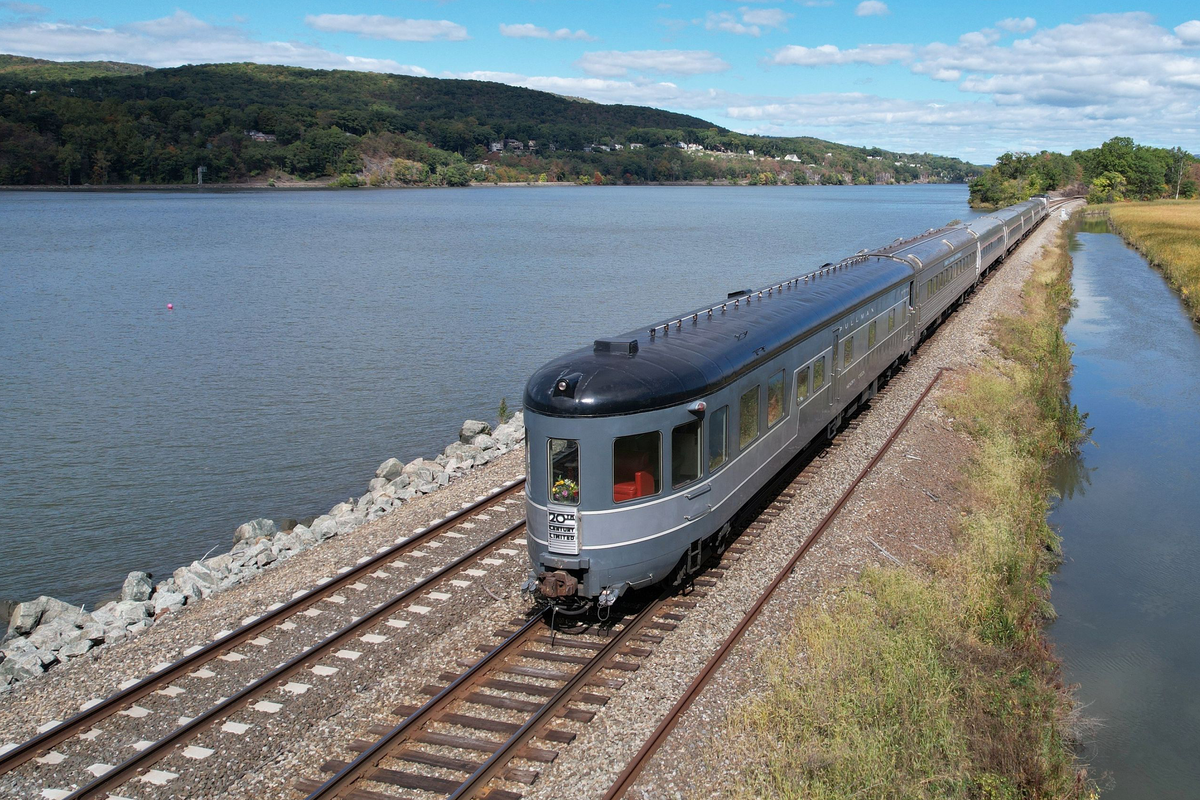
But at least one place offers a chance to ride in style at an affordable price. The Hudson River Rail Excursions run between New York City and Albany, and are organized by the nonprofit United Rail Historical Society of New Jersey. The excursions feature two historic New York Central cars added to a regular Amtrak train that runs through the Hudson River Valley, the same exact route the cars ran on back in the 1950s, when they were part of one of the nation’s most famous passenger trains, the “20th Century Limited.” Both cars have been restored inside and out to how they appeared in the 1950s, with mid-century furnishings. And just like the original train, they always roll out a red carpet (literally) for guests to walk across as they board at Penn Station.
“This is rail travel at its absolute best,” says Kevin Phalon, executive director of the United Railroad Historical Society. “The New York Central’s 20th Century Limited was as good as it got…. The only thing missing on our trips from the original experience is the smell.” (Back in the day, the luxury rail cars were redolent of burning tobacco.).
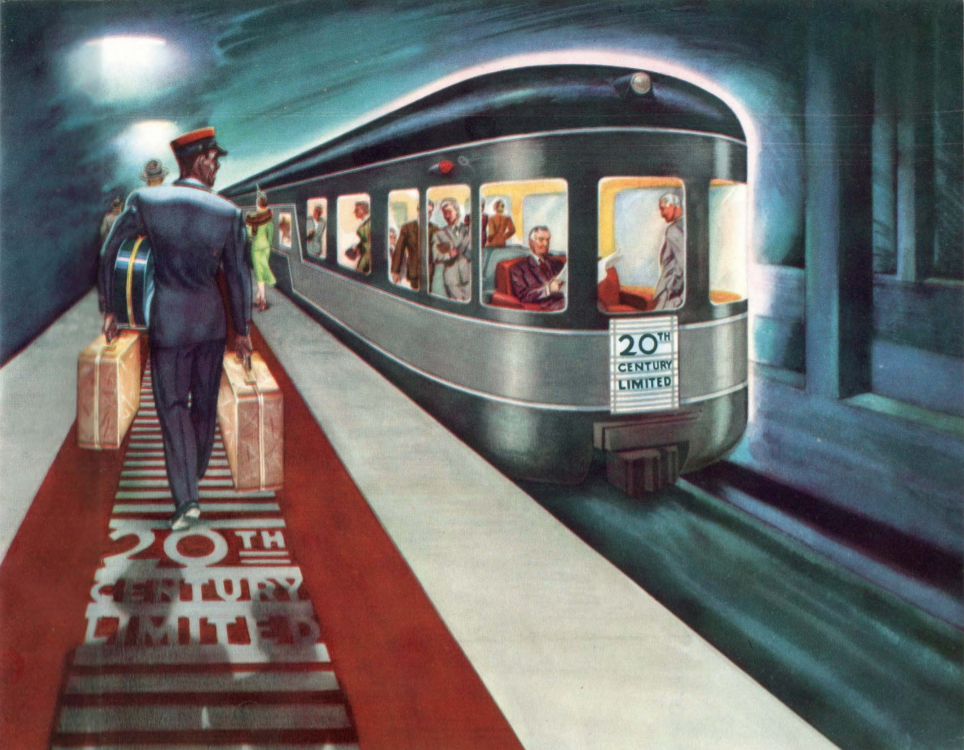
The Hudson River Rail Excursions began in 2021 and the idea proved so popular that tickets sold out in under 60 seconds. Phalon says organizers quickly added more trips. Those sold out, too. In 2023, the train will make 48 runs, including a special trip to Chicago this fall. Once again, the trips to Albany sold out and while tickets haven’t gone on sale for the overnight Chicago trip, more than 3,000 people have expressed interest for 30 spots.
Tickets on the Hudson River Rail Excursion range from $150 to $380, depending on the level of service and day of the week. (A ride on the regular Amtrak train costs $45 to $60.) Phalon says being able to share the experience of traveling aboard these historic rail cars is important to his organization.
“We’re trying to democratize this experience and that’s something we’re really proud of,” he says.

Regardless of whether the trip is just a day up the Hudson River to Albany or across the country, Capwell says, traveling by rail in these vintage passenger cars is something everyone should experience at least once. It’s why people like him work hard to preserve it.
“Back in the day, just getting to a place was part of the overall travel experience and we think it’s so important to preserve that experience,” he says. “It’s rare today and it’s something that is really special.”
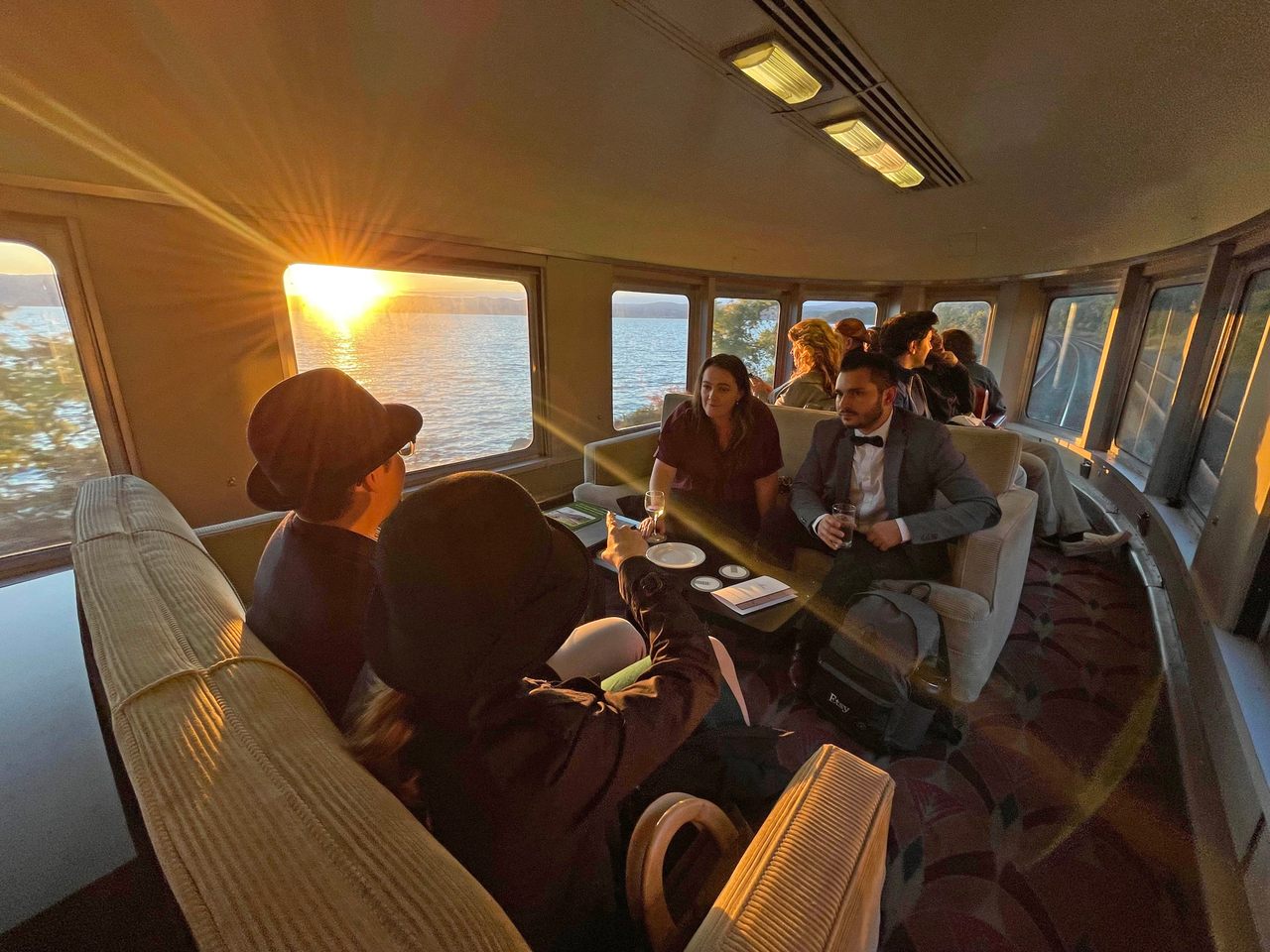


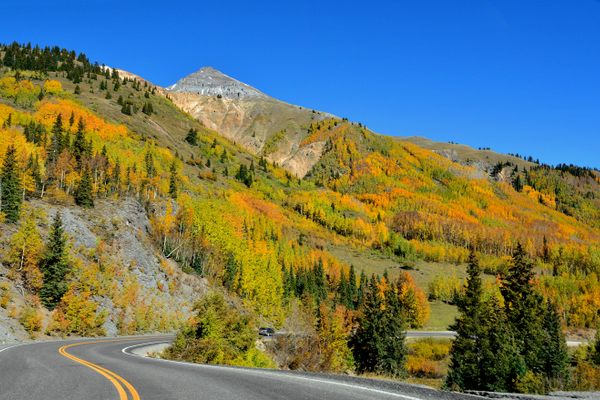


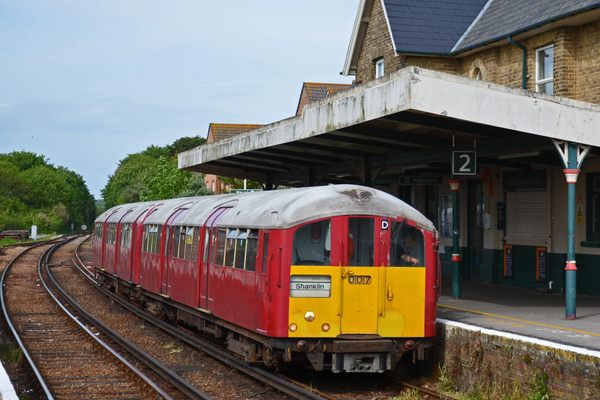















Follow us on Twitter to get the latest on the world's hidden wonders.
Like us on Facebook to get the latest on the world's hidden wonders.
Follow us on Twitter Like us on Facebook